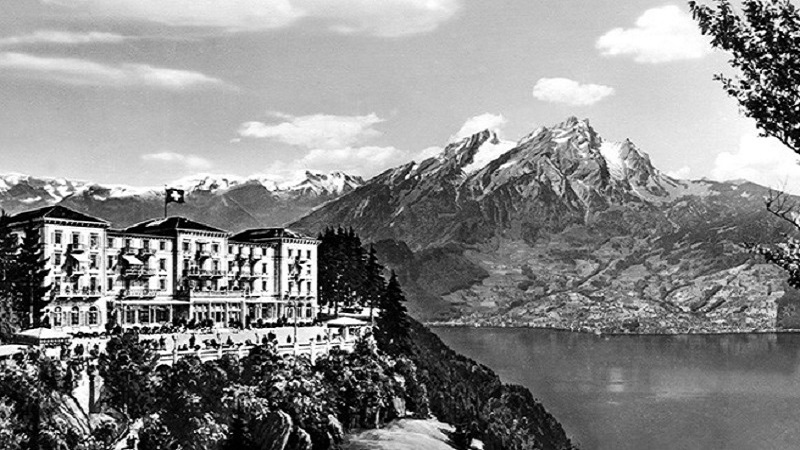Sources cited:
Lászlóné Batthyány-Strattmann, née Mária Terézia [Mizl] Coreth, Diaries, 1907. 1920. Körmend, Nizza. Manuscript collections of the Hungarian National Széchenyi Library, Oct. Hung. 1972.
Gyuláné Andrássy, née Eleonóra Zichy, Diaries (1917–1922), Hungarian National Archives, OL P 4 330. t.
Eugénie Odescalchi: Egy hercegnő emlékezik [A Princess Remembers]. Budapest: Gondolat, 1987.
A number of diaries and correspondence from female members of the aristocracy offer insight into the period 1918-1920. This corpus is complemented by memoirs, which have recently enjoyed an upsurge in popularity and some of which have been published in several editions. These latter also frequently provide relevant details about the events of the period. This essay presents interpretations of the collapse which allow the investigation of linkages connecting female roles in society to “high politics”. Included in the survey are the memoirs of Eugénie Odeschalci, as well as the diaries Eleonore Andrássy, née Zichy and Maria Theresa Batthyány, née Coreth. Examining these authors and their texts open up a novel perspective on the dissolution of the Dual Monarchy and of historic Hungary.
A young lady in the occupied Banat
Duchess Eugénie Odescalchi married Baron Béla Lipthay on November 30, 1918 at a ceremony held in Pozsony/Bratislava. Organizing the wedding was exceptionally difficult due to the parallel revolutionary events unfolding in Budapest and Pozsony/Bratislava. In the end, the number of guests had to be scaled back substantially. For Eugénie, the tumultuous fall of 1918 nevertheless became inseparable from one of the outstanding events of her personal life. Her memoirs reflect the preoccupation of the young aristocrat with this experience. After the wedding, the couple moved to the Lipthay estate, situated in the proximity of Lovrin in the Banat, and started setting up their joint lives.
The memoirs of the elderly duchess, published in 1987, present a quintessentially feminine perspective about the period. The reader encounters an author-protagonist preparing for a new life, separated from her family and embarking on a new course with her husband under difficult circumstances arising out of the historical context. The personal story thus unfolds in front of a backdrop reflecting the increasing Serbian and Romanian interest in the region, soon to become part of a new state. The duchess chronicles widely different issues such as the difficulties related to (or even lack of) the railroad connections between Budapest and newly occupied territories, evident in the hardships the newlyweds had to endure travelling from the capital to Lovrin. Aspects related to the mandatory quartering of Serbian officers in the Lovrin castle, such as their strange table manners also find their way onto the pages of the memoir. The quest to purchase the baby clothes and linen for their future child is especially revealing with regard to the consequences of the new borders: stores in nearby Temesvár/ Timișoara are depleted, so the duchess needs to cross the new border to Szeged. This, however, requires using connections, notably securing the aid of the Romanian wife of another aristocrat, Baron Félix Gerlóczy, to procure permissions for crossing the border. The book also offers a broad tableau about the disappearance of the Hungarian landed aristocracy, of whom only a few were to return to the region in later years. Still, even this partial re-appearance was sufficient for the author to once more build neighborly relations with some of the returnees.
Eugénie Odescalchi's wedding photo.
Despite the hardships, Eugénie and her husband chose to stay. Moving to Hungary proper seems to not have figured amongst their plans. They were not alone: Stella Kuylenstierna-Andrássy, who was of Swedish descent, had arrived to nearby Homonna as a young wife to Imre Andrássy, where she proceeded to build a new life for herself and her family. Another parallel can be drawn with the memoirs of Ilona Gyulai-Edelsheim (the future wife to the Vice-Regent István Horthy), who describes a similar dilemma with her father deciding to stay, with the family, in Felsőelefánt/Horné Lefantovce, despite the region having come under Czechoslovak rule.
The collapse from afar: Emigration
Eleonore Andrássy, née Zichy held a privileged position: her husband ensured her first-hand access to the latest political news. She kept her diary between 1917 and 1922. Around late October 1918, the pages are dominated by reports about the various negotiations in which the husband participated as joint foreign minister of Austria-Hungary. Later, these reports cede their place to criticisms of the subsequent, revolutionary government of Mihály Károlyi. In this respect, it mattered little that her daughter, Katinka Andrássy was married to Károlyi. At the same time, this did place the author into an ambiguous situation: she passionately disagreed with most aspects of Károlyi’s and her daughter’s politics, yet as a mother she also worried about what life had in store for Katinka.
The Andrássys, following the example of numerous aristocrats from Hungary, quit the country in early 1919. They stayed in Switzerland during the months of the Hungarian Soviet and returned home, for good, in September 1919. If one compares the motivations for emigrating found among members of the aristocracy, the “cream” of the countryside elites, the same issues recur again and again: the Aster revolution of October 1918 itself, the lawlessness prevailing in the countryside and finally the permanent sense of insecurity. In 1919, the number of “incentives” grew even further: the policies of the Hungarian Soviet Republic and the invading Romanian, Czech and Serbian (as well as French) troops, the devastation they brought upon the country could also force the rapid evacuation of the family home for this stratum, if sometimes only for a shorter period of time. Switzerland ranked among the preferred destinations for aristocrats. Eleonore’s diary illustrates that emigration did not imply solitude: the Andrássys shared their émigré days with other aristocrats in Switzerland, including Archduke Frederic of Habsburg and other pre-eminent compatriots, even if the archduke only spent a few months there with his family. This “high society” would convene frequently in the salon of Bürgenstock’s Grand Hotel or in the elegant suite of one or the other aristocrat, discussing options to return to Hungary or the destruction that befell their homes.
Compared to the period October-November 1918, the diary’s themes shifted in emigration. Eleonore Andrássy seems less invested in politics and focuses more on everyday life in Switzerland. Frequently she includes letters sent to her by her daughters or sisters. These letters were the main source of information for her about all that had happened in the homeland and the estates, including the looting of the Zichy castle in Alsószéplak and that of the Andrássy residence in Homonna. (The fates suffered by these family estates were not out of the ordinary: locals and roaming soldiers often broke into aristocrats’ homes in the period.)
Countess Andrássy and her companions had no choice but to observe the events back home from afar. They could not be certain about which news from Hungary to lend credence to, and if the news was bad, the distance made it easier to not lose heart, than it was for relatives who had remained back home. The desire to return was, at the same time, universal. The news of the fall of the Soviet was therefore celebrated with a dinner and a lavish ball (at the Grand Hotel) by the circle of Hungarian aristocrats, joined by the family of the Habsburg archduke. Even if during the period of their voluntary exile the events in Hungary figure less prominently in the diary, the perspective, shaped by the sojourn abroad, is novel and interesting, further broadened by the effect of interacting with other émigrés from foreign countries. The latter especially contributed to her ability to interpret the collapse of historic Hungary in its international context.
Between God and the mutilated homeland
Duke László Batthyány-Strattmann, an ophthalmologist, had resided in the Köpcsény/Kittsee castle with his family prior to 1919, when they opted to leave for Switzerland. They returned at the end of the year, spending merely a few weeks in the family home before moving to Körmend, the ducal residence of the Batthyány-Strattmann clan. The family considered this precautionary move a quasi-tragedy, but they had their good reasons for it: Köpcsény/Kittsee was in a highly endangered geographical position: Austrian and Czech troops alike could unexpectedly march on the village which lay in the close vicinity of Pozsony/Bratislava.
Batthyány-Strattmann’s wife, Maria Theresa chronicled the process of coming to terms with and adapting to the situation in her diary entries dated January 1920. These give an account about the details of moving, including shipping the furniture or packing up the silverware. She also reported on furnishing their new home, and even more importantly: setting up the new hospital. She assisted her husband in his work as a doctor, often seconding him during operations. These activities, however, did not erase traces of her worries regarding the fate of Köpcsény/Kittsee, and she also makes a few asides about the political events of the day. It is during these digressions that occurrences such as the January 16 speech by Albert Apponyi and the electoral campaign appearances of count Antal Sigray in the Western borderlands find their way into the text.
The duchess formed a particular opinion about the collapse and the unwanted relocation of the family informed by her Christian perspective. The family’s life was very much imbued with religion: both parents and their eleven children participated in daily mass as a matter of fact. The spirit of this religiosity is palpable in the diary, when events of national significance figure on its pages: her opinions are guided by a sense of docility and acquiescence. When the family chaplain consecrates the Körmend castle upon moving in, she remarks how the blessing of the three mages is in fact required to exorcise the spirit of communism from around the family home.
In sum, Maria Theresa shared in the worries of others regarding the dissolution of the historical country, and she certainly feared how it would impact the family. (She was right, as the Köpcsény/Kittsee estate was to be divided up between three countries.) She nevertheless went about and attempted to rebuild her life accepting her fate and God’s will. Looking to help the Körmend hospital become operational, to furnish the castle there she is motivated by her convictions and her faith, which imbues her with a certain optimism regarding the future – even if she pines for moving back to Köpcsény/Kittsee. Her interpretation of the era, however, should not be seen as closely related to the 16th and 17th century tradition that considered Ottoman conquest to be God’s punishment. Unlike in the archaic tradition, she never looked upon God as willfully causing destruction, rather, it was faith that imbued her gaze cast upon the events and that gave her reason to hope – be it regarding their new lives in Körmend or the future of the country as a whole.
The female perspective and interpretations of the collapse
The texts by these three female authors enable us to integrate new perspectives into historical research. The specificity of social status, in this case, reveals complex processes unique to their stratum. While parallels can be found between urban populations and aristocrats retired to their countryside manors, for instance with regard to atrocities (looting was plaguing cities at the time but also reached large estate owners and their castles), dilemmas unique to the latter group were more frequent. Eleonore Andrássy especially gives a detailed account of the difficulties associated with keeping up appearances befitting one’s social status and rank while living the life of an émigré. These include at times minor issues such as how to welcome fellow exiles in the suite of a Swiss hotel without having personnel attending to the guests – this was certainly a problem that only the magnates experienced.
At the same time, other perspectives informed by living life as a woman contribute to constructing a novel vantage point for interpreting the period as a whole. This endeavor is also helped along by drawing on works such as the ones consulted for this piece. Female authorship (re-)centers different, otherwise perhaps overlooked details in the narratives (compared to texts composed by males). What did the involuntary relocation imply for a family and its daily life? Could female roles and associated social conventions be upheld, even in their most rudimentary form, in such situations? Such questions are opened up to interpretation by these diaries and memoirs, as well as in correspondences between female relatives, which all tended to focus on the challenges and successes of managing the household and family life, raising children, births and deaths, as well as social events such as balls.
The three selected authors share this perspective and sensitivity, while leaving open many other possible vistas of engaging with their texts. This was the chief reason for choosing to include them in this essay. It is the text by Eugénie Odescalchi that discusses at greater length the collapse of the country and its military occupation – even if these events function as context for the most important private experiences, such as marriage and giving birth. Eleonore Andrássy’s diary has a different focus, despite the familiar experience of being forced to leave the family home and worrying about those in the family who stayed back home, hallmarks of the female and maternal roles in the period. At the same time, the author also offers a vivid tableau of the everyday dimension of “high politics”, including activities by émigré politicians – all told from the vantage point of the “wife” of such a politician. The interpretation of events found in the diary of Duchess Batthyány, finally, differs from both aforementioned ones and reflects a unique approach to the outside world. Religion and politics, faith in God and prospects for the Hungarian nation are closely connected on its pages, making it into somewhat of an exception among the sources authored by female aristocrats. The memoirs of Eugénie Odescalchi contain a few scattered remarks connected to religious observance and practice, while Eleonore Andrássy’s writing reflects the author’s acquiescence to the anticlericalism embraced by the families of both her husbands. This does not make the inclusion of Batthyány’s divergent, religious reading of the events superfluous – it represents yet another color in our reconstruction of the era and also in the vast group of reflections on Trianon.






